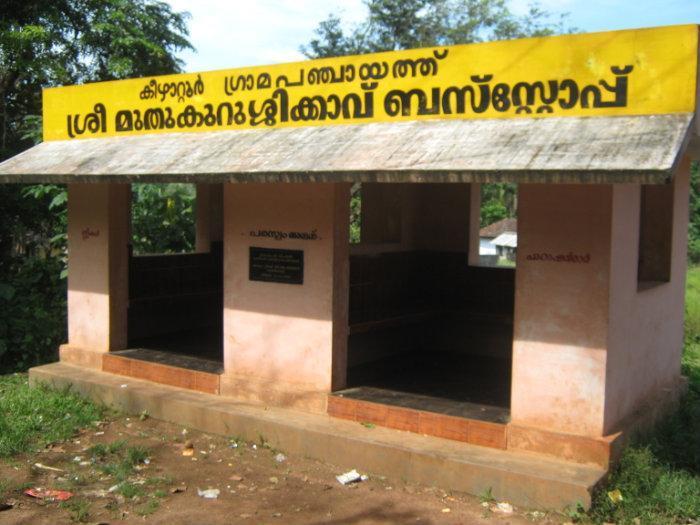SORRY.........WILL BE UPDATED ............IN DRAFT MODE
memantine hydrochloride is as illustrated below.
Formula: Ci
2H
22CIN Molecular weight: 215.81 U.S. Patent No. 3,391,142
NMR......
http://file.selleckchem.com/downloads/nmr/S204301-Memantine-HCl-HNMR-Selleck.pdf
HPLC
http://file.selleckchem.com/downloads/hplc/S204301-Memantine-hydrochloride-Namenda-HPLC-Selleck.pdf
| Molecular Weight (MW) |
215.76 |
|---|
| Formula |
C12H21N.HCl |
| CAS No. |
41100-52-1 |
.......................................................................

IF THERE IS ONE METHYL EXTRA
Example 7: l-Amino-3.5.7-trimethyladamantane hydrochloride (Me-MMN*HC1) synthesis
16.2 g (20 ml) of n-butanol, 2.3 g of
l-acetamido-3,5,7-dimethyladamantane, and 3.6 g of 89.9% potassium
hydroxide were added to a 50 ml reactor equipped with a
condenser, a mechanical stirrer, and a thermometer at 20-25
0C under nitrogen. After addition, the internal temperature rises to 40-45
0C
without external cooling. The resulting suspension is heated to
128-132°C over 20-30min and a solution is obtained. After 15hrs at
128-132°C (slight reflux), the reaction is considered to be complete
(unreacted 1- acetamido-3,5,7-dirnethyladarnantane less than 5%).
After cooling to 45-50
0C, water (20ml) is added to form a biphasic system. After stirring (5min) and standing (15min) at 20-25
0C
phases are separated. The aqueous phase is discarded and the organic
phase is washed with water (2 x 20 ml). The obtained organic solution is
acidified with HCl to pH 1 and the solution is concentrated under
vacuum until a semisolid is obtained. At this point, after cooling to
45-50
0C, ethyl acetate (40ml) is added. The obtained
suspension is cooled to 0±3°C and after 3hrs the suspension is filtered
and the recovered solid is washed three times with ethyl acetate (6ml
each). Wet white solid is dried under vacuum at 55-60
0C for 15hrs. Dry weight, 1.93g.
1H NMR is reported:
1H-NMR in CD
3OD (298K)
 http://www.google.com.ar/patents/EP1999100A1?cl=en
http://www.google.com.ar/patents/EP1999100A1?cl=en
Memantine hydrochloride, l-amino-3,5-dimethyladamantane
hydrochloride, is one of a small group of drugs known as Tricyclic
Antivirals (TAVs), and provides good and persistent activation of
central nervous system N-methyl-d-aspartate (NMDA) receptors, such that
it can be used in the treatment of Parkinson's and Alzheimer's diseases.
The chemical structure of memantine hydrochloride is as illustrated
below.
Formula: Ci
2H
22CIN Molecular
weight: 215.81 U.S. Patent No. 3,391,142 ('"142 patent") discloses the
synthesis of memantine hydrochloride and its precursor,
l-acetamido-3,5-dimethyladamantane, according to following scheme.
In the first reaction, l-bromo-3,5-diτnethyladamantane
reacts with 17 moles of acetonitrile and 35 moles of sulphuric acid at
room temperature to give the crude intermediate product in 100 percent
yield. The intermediate product is subjected to alkaline hydrolysis with
sodium hydroxide in diethylene glycol by refluxing at a temperature
greater than 190
0C for six hours. The hydrolyzed product is
diluted with water, followed by several benzene extractions, and the
memantine free base is recovered by solvent distillation. The free base
is then diluted with ether, and the addition of hydrogen chloride gas
provides crude memantine hydrochloride. The crude product is then
crystallized from a mixture of ethanol and ether. The '142 patent also
discloses the compounds: l-bromo-3,5,7-trimethyladamantane
(Br-TMAD) and l-bromo-3-methyladamantane (Br-MMAD)
U.S. Patent No. 5,061,703 also discloses the compounds:
l-Amino-3,5,7- trimethyladamantane hydrochloride (Me-MMN*HC1) and
l-Amino-3- methyladamantane hydrochloride (DesMe-MMN*HCl).
Like any synthetic compound, memantine hydrochloride
salt can contain extraneous compounds or impurities that can come from
many sources. They can be unreacted starting materials, by-products of
the reaction, products of side reactions, or degradation products.
Impurities in memantine hydrochloride salt or any active pharmaceutical
ingredient (API) are undesirable and, in extreme cases, might even be
harmful to a patient being treated with a dosage form containing the
API. It is also known in the art that impurities in an API may arise
from degradation of the API itself, which is related to the stability of
the pure API during storage, and the
manufacturing process, including the chemical synthesis. Process
impurities include unreacted starting materials, chemical derivatives of
impurities contained in starting materials, synthetic by-products, and
degradation products.
In addition to stability, which is a factor in the
shelf life of the API, the purity of the API produced in the commercial
manufacturing process is clearly a necessary condition for
commercialization. Impurities introduced during commercial manufacturing
processes must be limited to very small amounts, and are preferably
substantially absent. For example, the International Conference on
Harmonization of Technical Requirements for Registration for Human Use
("ICH") Q7A guidance for API manufacturers requires that process
impurities be maintained below set limits by specifying the quality of
raw materials, controlling process parameters, such as temperature,
pressure, time, and stoichiometric ratios, and including purification
steps, such as crystallization, distillation, and liquid-liquid
extraction, in the manufacturing process.
The product mixture of a chemical reaction is rarely a
single compound with sufficient purity to comply with pharmaceutical
standards. Side products and by-products of the reaction and adjunct
reagents used in the reaction will, in most cases, also be present in
the product mixture. At certain stages during processing of the API,
memantine hydrochloride, it must be analyzed for purity, typically, by
HPLC, TLC or GC analysis, to determine if it is suitable for continued
processing and, ultimately, for use in a pharmaceutical product. The API
need not be absolutely pure, as absolute purity is a theoretical ideal
that is typically unattainable. Rather, purity standards are set with
the intention of ensuring that an API is as free of impurities as
possible, and, thus, are as safe as possible for clinical use. As
discussed above, in the United States, the Food and Drug Administration
guidelines recommend that the amounts of some impurities be limited to
less than 0.1 percent.
Generally, side products, by-products, and adjunct
reagents (collectively "impurities") are identified spectroscopically
and/or with another physical method, and then associated with a peak
position, such as that in a chromatogram, or a spot on a TLC plate.
(Strobel p. 953, Strobel, H. A.; Heineman, W.R., Chemical
Instrumentation: A Systematic Approach, 3rd dd. (Wiley & Sons: New
York 1989)). Thereafter, the impurity can be identified, e.g., by its
relative position in the chromatogram, where the position in a
chromatogram is conventionally measured in minutes between injection of
the sample on
the column and elution of the particular component through the detector.
The relative position in the chromatogram is known as the "retention
time."
The retention time can vary about a mean value based
upon the condition of the instrumentation, as well as many other
factors. To mitigate the effects such variations have upon accurate
identification of an impurity, practitioners use the "relative retention
time" ("RRT") to identify impurities. (Strobel p. 922). The RRT of an
impurity is its retention time divided by the retention time of a
reference marker. It may be advantageous to select a compound other than
the API that is added to, or present in, the mixture in an amount
sufficiently large to be detectable and sufficiently low as not to
saturate the column, and to use that compound as the reference marker
for determination of the RRT.
Those skilled in the art of drug manufacturing research
and development understand that a compound in a relatively pure state
can be used as a "reference standard." A reference standard is similar
to a reference marker, which is used for qualitative analysis only, but
is used to quantify the amount of the compound of the reference standard
in an unknown mixture, as well. A reference standard is an "external
standard," when a solution of a known concentration of the reference
standard and an unknown mixture are analyzed using the same technique.
(Strobel p. 924, Snyder p. 549, Snyder, L.R.; Kirkland, J.J.
Introduction to Modern Liquid Chromatography, 2nd ed. (John Wiley &
Sons: New York 1979)). The amount of the compound in the mixture can be
determined by comparing the magnitude of the detector response. See also
U.S. Patent No. 6,333,198, incorporated herein by reference.
The reference standard can also be used to quantify the
amount of another compound in the mixture if a "response factor," which
compensates for differences in the sensitivity of the detector to the
two compounds, has been predetermined. (Strobel p. 894). For this
purpose, the reference standard is added directly to the mixture, and is
known as an "internal standard." (Strobel p. 925, Snyder p. 552).
The reference standard can serve as an internal
standard when, without the deliberate addition of the reference
standard, an unknown mixture contains a detectable amount of the
reference standard compound using the technique known as "standard
addition."
In the "standard addition technique", at least two samples are prepared
by adding known and differing amounts of the internal standard.
(Strobel pp. 391-393, Snyder pp. 571, 572). The proportion of the
detector response due to the reference standard present in the mixture
without the addition can be determined by plotting the detector response
against the amount of the reference standard added to each of the
samples, and extrapolating the plot to zero concentration of the
reference standard. (See, e.g., Strobel, Fig. 11.4 p. 392). The response
of a detector in GC or HPLC (e.g. UV detectors or refractive index
detectors) can be and typically is different for each compound eluting
from the GC or HPLC column. Response factors, as known, account for this
difference in the response signal of the detector to different
compounds eluting from the column.
As is known by those skilled in the art, the management
of process impurities is greatly enhanced by understanding their
chemical structures and synthetic pathways, and by identifying the
parameters that influence the amount of impurities in the final product.
Summary of the Invention In one embodiment the present
invention provides a process for preparing memantine HCl having less
than about 0.15% of one or both of of Ac-NH-TMAD and Ac- NH -MMAD
comprising measuring an amount of at least one or both of N-acetyl-1-
amino-3,5,7-trimethyladamantane (Ac-NH-TMAD) and N-acetyl-l-amino-3-
methyladamantane (Ac-NH -MMAD) in a batch of
l-acetamido-3,5-dimethyladamantane, selecting a batch of
l-acetamido-3,5-dimethyladamantane having less than about 0.15% of one
or both of of Ac-NH-TMAD or Ac-NH -MMAD and converting the selected
batch of l-acetamido-3,5-dimethyladamantane to memantine HCl containing
less than about 0.15% of at least one of DesMe-MMN HCl or MeMMN HCl.
In one embodiment the present invention provides a
process for preparing memantine HCl containing less than about 0.15% of
at least one of DesMe-MMN HCl or MeMMN HCl comprising measuring an
amount of one or both of l-bromo-3,5,7- trimetyladamantane (Br-TMAD) or
l-bromo-3-methyladamantane (Br-MMAD) in a batch of
l-bromo-3,5-dimethyladamantane, selecting a batch having one or both of
less than about 0.15% of Br-TMAD or less than about 0.20% area Br-MMAD
and converting the batch of l-bromo-3,5-dimethyladamantane to memantine
HCl containing less than about 0.15% of at least one of DesMe-MMN HCl
and MeMMN HCl.
In one embodiment the present invention provides a
process for reducing amount of impurities present in memantine HCl
comprising measuring an amount of at least one
or both of l-bromo-3,5,7-trimetyladamantane (Br-TMAD) and l-bromo-3-
methyladamantane (Br-MMAD) in a batch of l-bromo-3
55-dimethyladamantane,
selecting a batch having at least one of less than about 0.15% Br-TMAD
or less than about 0.20% area Br-MMAD as measured by gas chromatography,
and converting the batch of 1- bromo-3,5-dimethyladamantane to
l-acetamido-3,5-dimethyladamantane; measuring an amount of at least one
of N-acetyl-l-amino-3,5,7-trimethyladamantane (Ac-NH-TMAD) and
N-acetyl-l-amino-3-methyladamantane (Ac-NH -MMAD) in a batch of
1-acetamido- 3,5-dimethyladamantane, selecting a batch of
l-acetamido-3,5-dimethyladamantane having less than about 0.15% area by
gas chromatography of at least one of Ac-NH- TMAD and Ac-NH -MMAD and
converting the selected batch of l-acetamido-3,5- dimethyladamantane to
memantine HCl containing less than about 0.15% of at least one of
DesMe-MMN HCl and MeMMN HCl.
Alleppey kerala INDIA.....Alappuzha
en.wikipedia.org/wiki/Alappuzha
pronunciation (help·info)), also known as Alleppey, is the administrative headquarters of Alappuzha District of Kerala state of southern India. Alappuzha is the ...

.
Table in restaurant after eating fish, Alleppey, Kerala, India, South Asia,
PAGODA RESORTS ALLEPPEY KERALA INDIA

////////////















 .
.
















